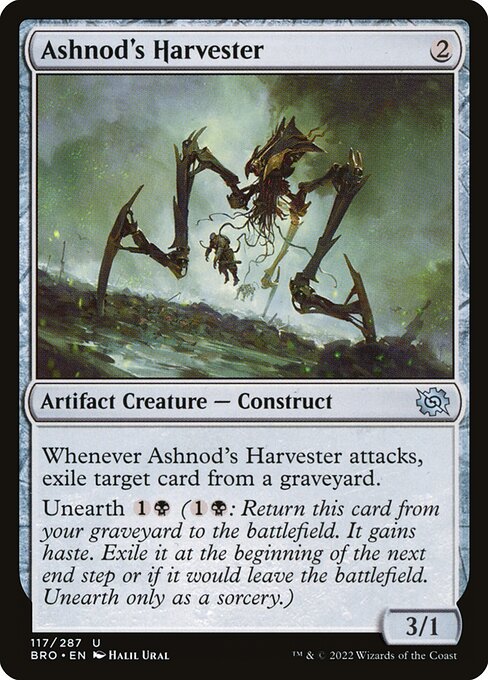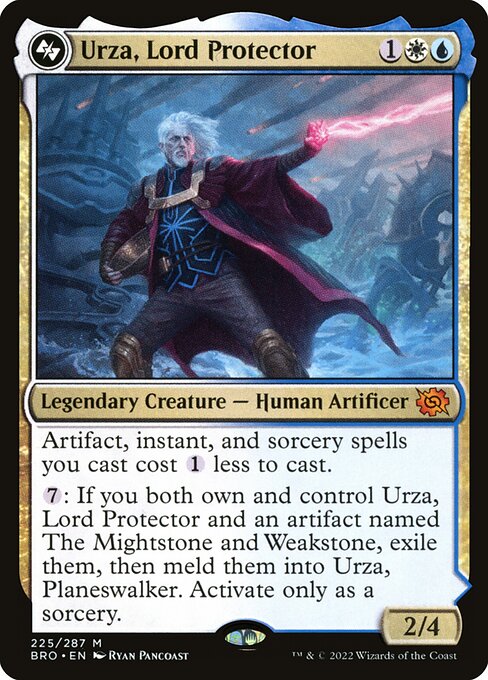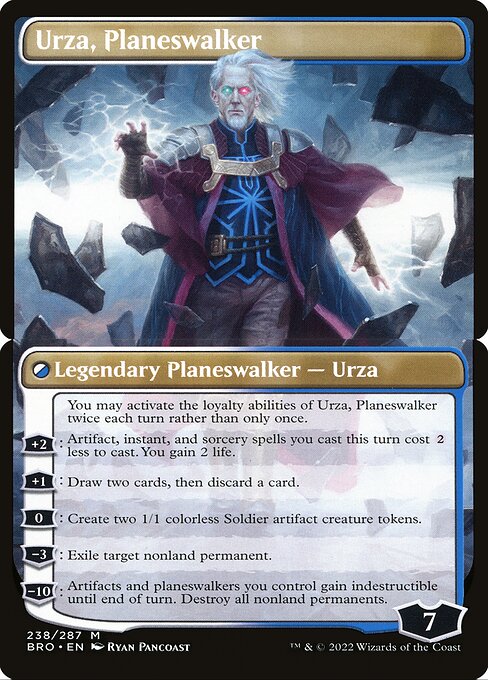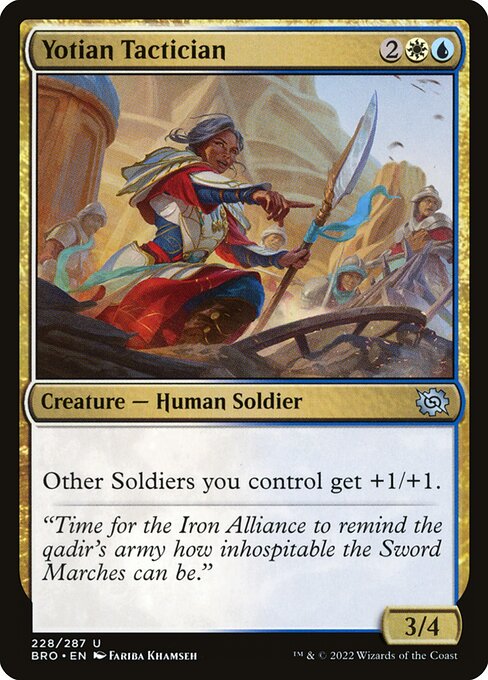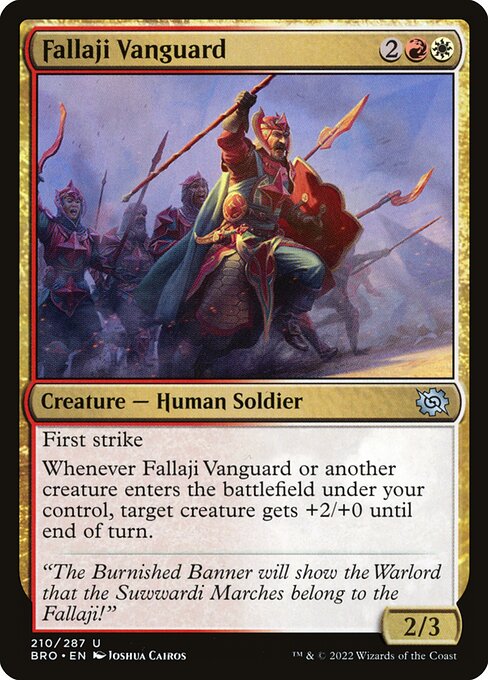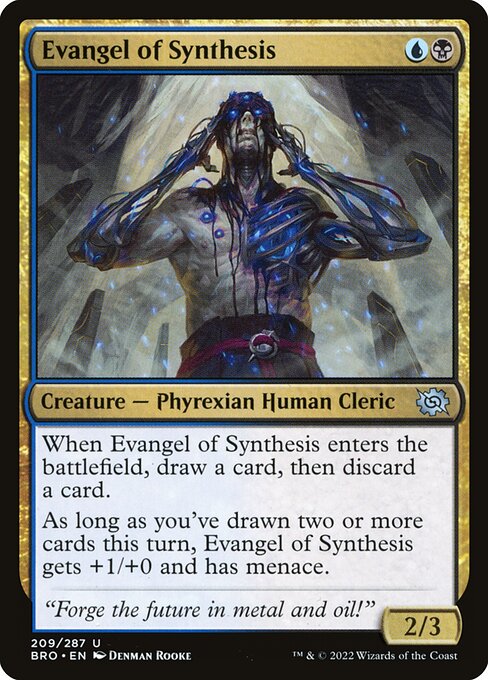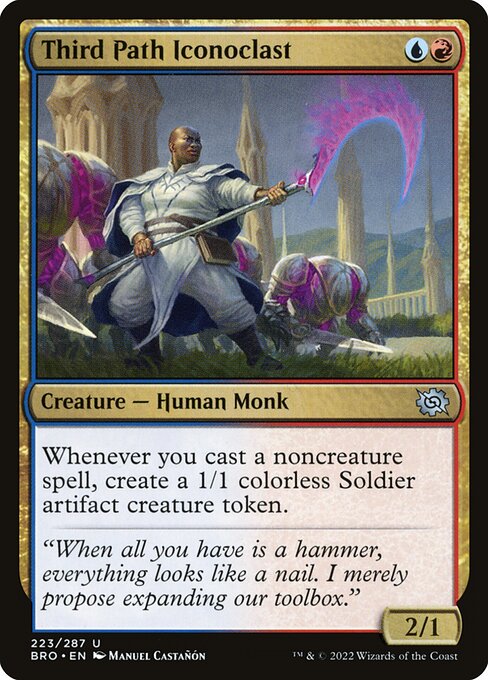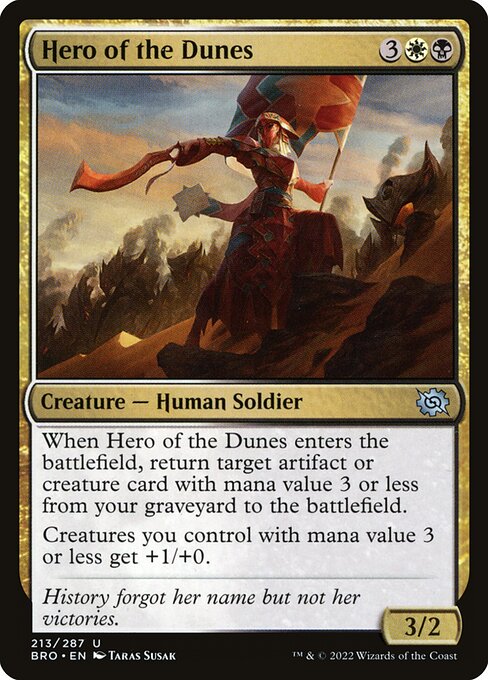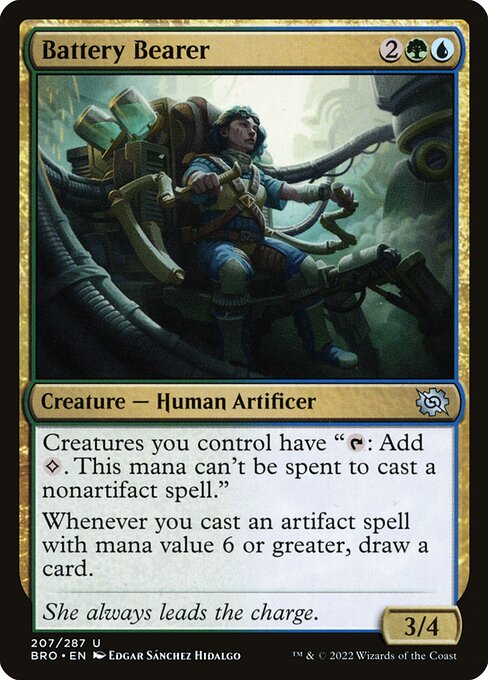Table of Contents
Sealed Deck? What’s That All About?
Some think of sealed as the great equalizer, as few things compare to the joy of constructing a haphazard 40-card pile and slinging spells with brand new mechanics we’ve only read about. Others think of it as the Magic: The Gathering casino, where the one who opens the best pool will be the last wizard standing at the end of the evening.
Sealed deck is a form of Limited similar to draft, yet it possesses some fundamental differences— In comparison to draft, in sealed deck it’s significantly easier to mash together your most powerful spells, all but ensuring you’ll be able to deploy them with enough time to stave off an aggressive rush or enemy mid game push.
The end result of these powerful spells and decent mana? Well, you’ve got plenty of payoffs to sink that sweet colorless mana from powerstones into, ensuring you can pull ahead on incremental advantages and best enemy wizards with imposing mana sinks that would make Mishra and Urza proud.
What’s a powerstone, you ask? That’s a great question and without moving further, we must grasp the landscape of The Brothers’ War to know what spells to cast and when to use our Prototypes, so without further ado we bring you a brief overview of the mechanics of the set!
Powerstone
Do I know any MTG lore? Absolutely not! Is the Powerstone what Mishra and Urza are fighting over? It has to be! When it comes to The Brothers’ War, no resource is more valuable than a powerstone token. This token enters the battlefield tapped in almost every scenario, and taps for one colorless mana that can be used to pay for activated abilities, triggered abilities, colorless spells, Unearth costs, almost anything… Except for casting nonartifact spells.
This is the central resource of the format and when building decks, if you’re not building towards powerstone synergies I believe you’ll need a good reason not to. Some colors lend themselves to powerstones better than others, but at the end of the day this is the fuel that propels us on a race to the top of this war!
Prototype
The flashy new ability on many of our overcosted minions from The Brothers’ War, this allows you to pay a discounted rate on large artifact creatures that will get you a smaller body while maintaining the keywords and rules text of the full card. Phyrexian Fleshgorger was the first monstrous Mythic spoiled with this ability, and Boulderbranch Golem is a common prototype that you’ll likely see cast for full-cost a lot during your Limited endeavors of the format. The Boulderbranch Golem does a solid Ravenous Lindwurm impersonation, flexing a 6/6 body and enough lifegain to match a couple of Revitalizes, this bruiser is an excellent battlecruiser to help stabilize games and turn corners in any color deck.
While Boulderbranch Golem plays well without being able to prototype it, the same is not true of all prototype cards so beware and tread with caution before you put an off-color 10 mana card in your deck… It’s important to think about what the fail case might be if you draw a prototype in your opening hand. Maybe you can pitch it to a Stern Lesson, but not all Prototypes are created equal.
Unearth
This is a classic ability that first debuted in Shards of Alara and allows creatures to create additional value from the graveyard in the form of a quick jaunt back onto the battlefield, with haste, for one last romp before sacrificing themselves to the Exile zone forever.
Unearth is seen on a common cycle of artifact creatures, as well as some larger monsters throughout the color pie. Of note, Unearth in the format plays a bit like Decayed zombies in Midnight Hunt, creating a very real threat of a counter-attack that forces opponents to play a more conservative game when attempting to turn the corner from lower life totals against a graveyard full of Unearth creatures, since swinging out might result in a lethal counterattack in many situations. This mechanic also plays very well with sacrifice synergies as well, since an Unearthed creature is just sacrifice fodder waiting to fulfill its destiny.
Meld
If you have to ask, you can’t afford it. There are some pairings of Rare cards that ‘Meld’ into a giant card if you possess both and trigger them (think Westvale Abbey). If you’re able to pull off a meld, send me a screenshot because I don’t think we’ll see this happening very often in a typical Sealed tournament and we won’t be wasting further words on the topic here… Moving on!
Format Thesis
The ability to go big quickly hasn’t been this prevalent since Adventures in the Forgotten Realms and unlike Treasures, Powerstones will stick around. On the other side of the coin, we can take a look at pack construction and note that the Retro Artifacts, a copy of which will be present in every draft booster that is opened, provide a wealth of unique abilities and build-around strategies. This type of pack construction hasn’t been seen since the likes of Time Warp and Approach of the Second Sun graced us in the form of the Strixhaven Mystical Archive.
The combination of midgame ramp across the color pie (Powerstones) and powerful build-around Retro Artifacts make Brothers’ War Sealed one of the most involved and intricate deck construction exercises we’ve seen in awhile, as pockets of synergy can pop up throughout your pool and take your Sealed deck build to the next level.
When it comes to the individual synergies and what to expect across the color pie, there’s a cycle of commons that self-mill and have a range of power levels. These will begin to show us what the colors are aiming to do and when layered against the signpost uncommon cards from the 10 color pairs, the format begins to come into focus. Let’s quickly run through these different archetypes to get a feel for their synergies and how they fit into the artifact puzzle.
Azorius (White/Blue) is an aggressive tempo deck at its core, combining inexpensive white threats with the support of blue interaction. At the higher rarities we see the Soldiers tribe supported, and if this deck is constructed primarily of commons it will likely take to the skies in the form of an aggressive flyers deck— An archetype as old as time.
Boros (Red/White) is another aggressive deck, this time pairing cheap threats from both White and Red with combat tricks and removal to break through early and punish slow starts from the opponent.
Dimir (Blue/Black) is a grindy, controlling shell that has a ‘draw two’ sub theme that is mildly supported, however, this isn’t the kind of theme that a sealed deck would be constructed of. Dimir cards will likely play well in controlling, grindy shells in BRO sealed where you’ll be wanting to draw two cards per turn but can win without the marginal payoff cards for that value, as drawing two cards a turn is a solid recipe for success already.
Golgari (Black/Green) is a midrange value deck using graveyard recursion to get repeated value from its creatures, amassing a commanding board presence before turning the corner with a couple of large creatures once the opponents aggression has been quelled.
Gruul (Red/Green) is a traditional beatdown-leaning midrange deck with cheap creatures, loads of combat tricks, burn spells that can go face, and plenty of big bodied creatures at a reasonable cost to keep the pressure up. The signpost uncommon, Arbalest Engineers, is simply a fantastic card with three strong modes that does a good job of summing up what this archetype is all about.
Izzet (Blue/Red) tends to fracture into two different builds— A red based artifact deck that uses blue interaction and has the ability to grind, or a tempo deck focused on Blue fliers backed up with some red interaction and a bit less of an artifact focus. These archetypes present themselves clearly in draft, whereas in Sealed the cards and archetypes may often blur into the synergy piles mentioned above.
Orzhov (White/Black) looks to be one of the grindiest, small-ball decks in the format. The combination of black sacrifice synergies and white token generation, with a plethora of strong Unearth cards in both colors allows the Orzhov deck to create some commanding board presences that are hard to break through while using graveyard or battlefield recursion (if Meticulous Excavation has a home, my guess is this is it) to turn the corner and close opponents out. Orzhov feels very well positioned against aggressive decks, and might be a bit weaker to evasion if your pool is light on spot removal.
Rakdos (Black/Red) is a straightforward deck rooted in artifact synergies that has a strong underlying sacrifice subtheme with Thraxodemon, Junkyard Genius, Sibling Rivalry, and Powerstone Fracture combining to create a power engine that feasts on Unearthed bodies and the minions of our foes. Rakdos can often be an archetype that builds itself when the right pool presents itself, and this deck can be extremely powerful and play many roles in different matchups.
Selesnya (Green/White) is a beat down deck with a subtheme of artifacts. It has potentially the best two mill three creatures in Airlift Chaplain and Blanchwood Prowleralong with one of the standout commons of the set in Argothian Opportunist.
Simic (Green/Blue)‘s goal is to ramp up and dropping big creatures, balancing it out so you don’t get run over with cards such as Weakstone's Subjugation.
Sample Builds
When approaching a sealed deck in Brothers’ War, we won’t be looking to our lands first as we would in Kaldheim or Dominaria United. We won’t be able to select the color with the most powerful cards and simply build out a support color that pairs well with the start. We’ll need to construct a unified plan that will start with a group of artifact cards that play well together with themselves and/or the powerful spells in one of your colors.
When I’m building a BRO sealed deck, I’ll crack my packs, sort my cards by color (with colored artifacts in the artifacts) and pull out any ‘high power’ cards in the colors that I’d like to keep on my radar when I start construction of the pool. After taking a quick survey of high powered cards, however, I’ll then set my colored cards aside and do a deep dive into my colorless cards, mapping them out by casting cost, creatures vs. non creatures, and so on, as if my colorless pool is a draft deck of its own. This allows me to see what my pool is trying to do, because if we aren’t going to utilize artifact synergies to hang in the mid-to-late game, we’ll need a unicorn of a pool that can be hyper-aggressive and go under these decks, and that is unlikely to crop up regularly. Let’s take a look at a sample Sealed Pool, and if you’d like to build along with me you can find the link here:

Now, you can see this isn’t even close to a finalized deck and (Spoiler!) I’ve already missed some colorless cards I should’ve included here. When you see the finished deck, you’ll notice a Scrapwork Cohort that I glazed over in my original assessment of the pool. I think this will be a common occurrence, so I’d recommend double-checking your artifacts before submitting a deck. I played in a prerelease and shared my deck’n’pool with some friends, receiving this question repeatedly, “Why didn’t you play the Combat Couriers?”
Let’s dive into a story.. At this event (my first BRO prerelease) I tried to approach my build with this strategy in mind, however, I ended up color-sorting my artifacts with abilities in a manner that those Couriers ended up in the ‘pseudo blue’ cards when I had started with a Rakdos shell splashing Saheeli. I ended up pivoting to an Izzet build when I realized that Saheeli was the most powerful card I was planning to play, and went back through my piles as the deckbuilding timer ticked down.
I landed on a pretty solid build by grabbing my blue cards and cutting most of my red cards sans a light splash, but the reality is that I glazed over the 2 copies of Combat Courier in my paper sealed deck and thought nothing of it during the three rounds that I was able to cobble together with a bad pool and some sacrifice synergies. After the prerelease, I shared my build and my pool with some friends and the resounding reply was, “Why didn’t you play the two copies of Combat Courier?”
I’ll come clean— It was a sorting error. I think Combat Courier is a wonderful common in decks with Islands and I had a ton of minor synergies with the sacrifice keyword, and Combat Courier is one of the best pieces of fodder in the format if you’re not sacrificing an opponent’s creature. Let’s check out the next phase of deckbuilding before we dive too deep into story time, though.
If you haven’t yet— Now’s the time to open up sealeddeck.tech and take a stab at this pool if you’d like to get the most out of this article before we move on. By no means do I think my build is great, either— It’s a tough pool. Working through builds, though, is what it’s all about and this format is incredibly intricate so I think it’s very important to have a good idea of the possibilities of the format, what your pool is trying to do, and what the reality checks of the format are (i.e. Disenchant is a common 1W Instant and that should not be forgotten during deck construction and gameplay).


Here are some progress shots of potential builds. I decided from my start and card pool that the Blue and Red cards were of interest, but also found quite a few green cards that could benefit my pool— Headlined by Titania’s Command. This got me asking one simple question that can start to point us towards the finish line of our build.
Are These Synergies Worth Pursuing in the Face of Raw Power?
When I said this format was intricate and trying, I wasn’t kidding. I’ve built quite a few sealed decks at this point and after a few rounds, I can find at least a couple inclusions and decisions that are incorrect— Often many more. After taking a step back I decided that the Prowess synergies of my Blue fliers were unlikely to finish a game with the card pool in question, so I chose to forego synergy in the face of raw card power— Enter Titania's Command

After looking at my pool, I came to the age old realization, “Play the good cards.” I repeated this mantra to myself as I sleeved up Titania’s Command, as the idea of not playing it haunted me from my first Prerelease. It was the best card in my pool, and I was blindsided and brainwashed by a few flashy signpost Uncommons, mistakenly leaving it in the sideboard. I was able to pull out the 3-0 anyways, but results aren’t justification for a tactical error no matter how powerful they are.
‘Play the good cards’ is the mantra of The Brothers’ War and contemporary Magic itself— The game is not as hard as it seems.
With that in mind I’ll bid you adieu— The Brothers’ War is an intricate and exciting set that allows the creative genius in all of us to shine through in the form of small combinations and pockets of synergy. If you can dream it, you can do it— So long as your powerstones can foot the bill. If they can’t, simply charge it to your brother’s account and bank on your latest Prototype changing the game!





